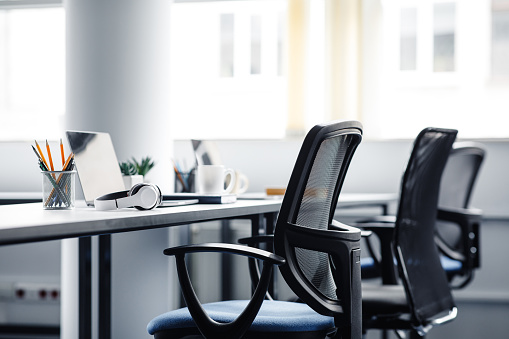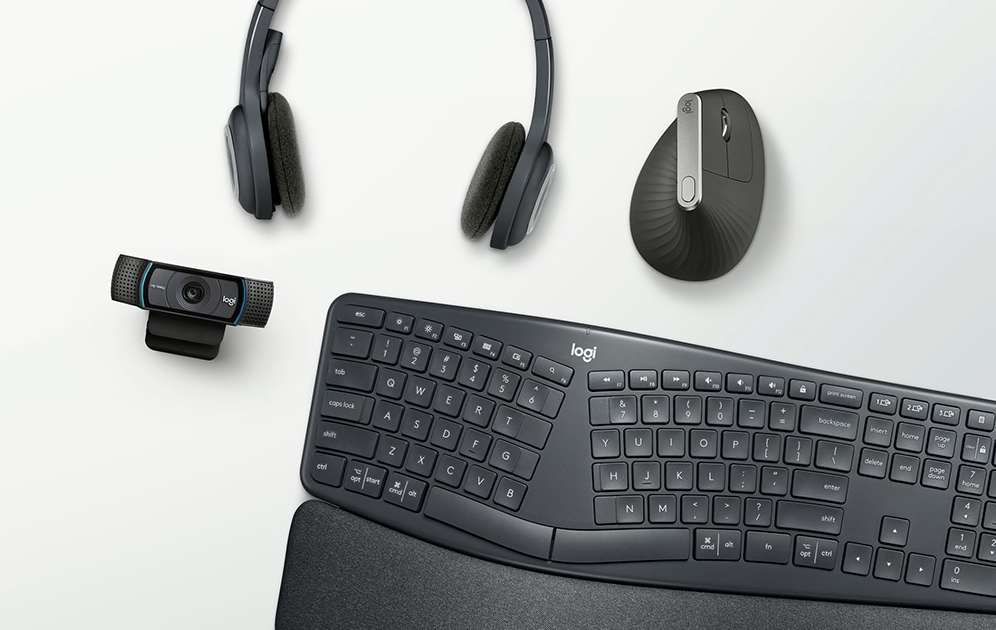Ergonomic office furniture refers to furniture that is designed with the goal of providing comfort and support to the body, reducing strain, and enhancing productivity. Ergonomic furniture is designed to work with the natural movements of the body, rather than forcing the body into an unnatural position, which can lead to discomfort and pain. Ergonomic furniture is not just limited to chairs, but also includes desks, keyboard trays, monitor arms, and other accessories. The main goal of ergonomic furniture is to create a workspace that is comfortable and supportive, allowing workers to focus on their tasks without being distracted by discomfort or pain.
What is the Importance of Ergonomic Office Furniture in Boosting Productivity?
Productivity is a key factor in the success of any business. Companies are always looking for ways to improve productivity, and one effective way to do this is by providing employees with ergonomic office furniture.
Ergonomic office furniture can have a significant impact on employee productivity. By reducing discomfort and pain, ergonomic furniture helps employees focus on their work without being distracted by physical discomfort. This can lead to increased efficiency and accuracy, as well as reduced errors and absenteeism.
In addition, ergonomic furniture can help prevent injuries and long-term health problems. Repetitive strain injuries and back pain are common among office workers, and can lead to missed workdays and reduced productivity. Ergonomic furniture is designed to minimize the risk of these injuries, making it a worthwhile investment for businesses of all sizes.
In this article, we will explore the benefits of ergonomic office furniture in boosting productivity. We will discuss how ergonomic furniture can reduce discomfort and pain, improve posture and circulation, and increase focus and efficiency. We will also provide an overview of the different types of ergonomic office furniture, including chairs, desks, keyboards, and mice, and offer tips on how to choose the right furniture for your workspace. By the end of the article, readers will have a better understanding of the importance of investing in ergonomic office furniture and how it can improve productivity and overall employee health.
How Ergonomic Office Furniture Can Boost Your Productivity?
A. Reduces Discomfort and Pain:
One of the most significant benefits of ergonomic office furniture is its ability to reduce discomfort and pain caused by prolonged sitting or standing. Non-ergonomic furniture can cause a wide range of musculoskeletal disorders, such as back pain, neck pain, shoulder pain, and wrist pain, which can significantly impact productivity.
- Examples of Discomfort and Pain Caused by Non-Ergonomic Office Furniture:
Non-ergonomic office chairs are one of the main culprits when it comes to discomfort and pain. They can cause back pain due to the lack of lumbar support, neck pain due to the lack of headrests, and wrist pain due to the absence of armrests.
Similarly, non-ergonomic desks can lead to discomfort and pain in the neck, shoulders, and back due to poor posture. For instance, a desk that is too high or too low can cause the neck and shoulders to strain, while a desk that is too shallow can cause a forward-leaning posture that puts pressure on the lower back.
- Benefits of Ergonomic Office Furniture in Reducing Discomfort and Pain:
Ergonomic office furniture is designed to reduce discomfort and pain by supporting the natural curves and movements of the body. Ergonomic chairs, for example, are adjustable and offer lumbar support, headrests, and armrests, which help alleviate back, neck, and wrist pain. Ergonomic desks, on the other hand, can be adjusted in height and depth to provide a comfortable and supportive working environment.
In addition, ergonomic furniture promotes good posture, which reduces the risk of developing musculoskeletal disorders. This, in turn, leads to less pain and discomfort and improves productivity in the long run.
B. Improves Posture and Circulation:
Ergonomic office furniture is also designed to improve posture and circulation, which can lead to numerous health benefits.
- How Non-Ergonomic Office Furniture Affects Posture and Circulation:
Non-ergonomic furniture can cause poor posture, which can lead to several health problems. Sitting in a hunched position can put pressure on the neck, shoulders, and back, leading to discomfort and pain. It can also reduce lung capacity, making it difficult to breathe properly.
In addition, non-ergonomic furniture can lead to poor circulation. Sitting for long periods in a poorly designed chair can cause blood flow to slow down, leading to a range of health problems, including varicose veins and deep vein thrombosis.
- Benefits of Ergonomic Office Furniture in Improving Posture and Circulation:
Ergonomic office furniture is designed to promote good posture and improve circulation. Ergonomic chairs are designed to support the natural curves of the spine, reducing the risk of back pain and promoting good posture. They also come with adjustable armrests, which help reduce pressure on the shoulders and neck.
Ergonomic desks can be adjusted in height and depth, allowing workers to maintain a comfortable and supportive posture. This, in turn, helps improve blood flow and reduce the risk of developing circulatory problems.
C. Increases Focus and Efficiency:
Ergonomic office furniture can also increase focus and efficiency, leading to improved productivity.
- How Non-Ergonomic Office Furniture Affects Focus and Efficiency:
Non-ergonomic furniture can be distracting and uncomfortable, leading to reduced focus and efficiency. Workers who are distracted by discomfort or pain are less likely to concentrate fully on their work, leading to reduced productivity and lower quality output.
- Benefits of Ergonomic Office Furniture in Increasing Focus and Efficiency:
Ergonomic office furniture is designed to provide a comfortable and distraction-free working environment. By reducing discomfort and pain, workers are less likely to be distracted and more likely to concentrate fully on their tasks.
Types of Ergonomic Office Furniture
A. Ergonomic Chairs:

Ergonomic chairs are one of the most important pieces of furniture in any office. They are designed to support the natural curves of the spine and reduce pressure on the neck, shoulders, and back.
- Features of Ergonomic Chairs:
Ergonomic chairs have several features that make them comfortable and supportive. These include adjustable lumbar support, headrests, and armrests. The lumbar support helps maintain the natural curve of the lower back, while the headrest supports the neck and shoulders. The armrests help reduce pressure on the shoulders and neck, preventing discomfort and pain.
- Examples of Popular Ergonomic Chairs:
Some of the most popular ergonomic chairs include the Herman Miller Aeron Chair, Steelcase Leap Chair, and Humanscale Freedom Chair. These chairs are designed to provide comfort and support throughout the workday, reducing the risk of developing musculoskeletal disorders.
B. Ergonomic Desks:

Ergonomic desks are designed to promote good posture and reduce strain on the neck, shoulders, and back. They are adjustable and can be tailored to the needs of individual workers.
- Features of Ergonomic Desks:
Ergonomic desks have several features that make them comfortable and supportive. They are adjustable in height and depth, allowing workers to maintain a comfortable and supportive posture. They also come with built-in cable management, which helps reduce clutter and keeps the workspace organized.
- Examples of Popular Ergonomic Desks:
Some of the most popular ergonomic desks include the Uplift V2 Desk, Jarvis Desk, and Steelcase Series 7 Height-Adjustable Desk. These desks are designed to provide a comfortable and supportive working environment, reducing the risk of developing musculoskeletal disorders.
C. Ergonomic Keyboards and Mice:

Ergonomic keyboards and mice are designed to reduce strain on the hands and wrists, preventing discomfort and pain.
- Features of Ergonomic Keyboards and Mice:
Ergonomic keyboards and mice have several features that make them comfortable and supportive. These include split keyboards, which reduce strain on the wrists, and vertical mice, which reduce strain on the hands.
- Examples of Popular Ergonomic Keyboards and Mice:
Some of the most popular ergonomic keyboards and mice include the Microsoft Sculpt Ergonomic Keyboard and Mouse, Logitech MX Ergo Wireless Trackball Mouse, and Kinesis Freestyle Pro Ergonomic Keyboard. These keyboards and mice are designed to reduce strain on the hands and wrists, improving comfort and productivity.
Investing in ergonomic office furniture is an investment in the health and productivity of employees. Ergonomic chairs, desks, keyboards, and mice are designed to reduce discomfort and pain, improve posture and circulation, and increase focus and efficiency. By providing a comfortable and supportive working environment, businesses can reduce the risk of developing musculoskeletal disorders and increase productivity in the long run.
Choose the Right Ergonomic Office Furniture
When choosing the right ergonomic office furniture, there are several factors to consider. These include:
- Comfort: Comfort is the most important factor when it comes to ergonomic office furniture. The furniture should be comfortable to sit or work on for long periods, reducing discomfort and pain.
- Adjustability: Ergonomic furniture should be adjustable to meet the needs of individual users. For instance, chairs should be adjustable in height and depth, and desks should be adjustable in height.
- Quality: The quality of the furniture is essential in ensuring durability and comfort. Look for furniture made from high-quality materials that can withstand regular use.
- Price: The price of ergonomic office furniture varies widely depending on the features and quality. It is essential to strike a balance between cost and quality when making a purchase.
Tips for Choosing the Right Ergonomic Office Furniture:
To ensure that you choose the right ergonomic office furniture, here are some tips to consider:
- Try Before You Buy: It is essential to try out the furniture before making a purchase to ensure that it is comfortable and supportive. This can be achieved by visiting a showroom or trying out furniture at a colleague’s office.
- Read Reviews: Reading online reviews can provide valuable insights into the quality and performance of ergonomic furniture. Look for reviews from users who have used the furniture for an extended period.
- Consult with an Expert: Consulting with an ergonomic expert can help you choose the right furniture based on your individual needs. An expert can provide valuable advice on the best furniture for your body type, work style, and health needs.
Ergonomic office furniture is essential in reducing discomfort and pain, improving posture and circulation, and increasing focus and efficiency. Investing in ergonomic furniture can lead to increased productivity and reduced healthcare costs. Investing in ergonomic office furniture is an investment in the health and well-being of employees. It can also lead to increased productivity and reduced healthcare costs, making it a smart investment for businesses. Choosing the right ergonomic office furniture requires careful consideration of factors such as comfort, adjustability, quality, and price. By trying out furniture before purchasing, reading reviews, and consulting with experts, businesses can ensure that they choose the right furniture for their employees. Investing in ergonomic office furniture can lead to increased productivity and reduced healthcare costs, making it a smart investment for businesses of all sizes.

